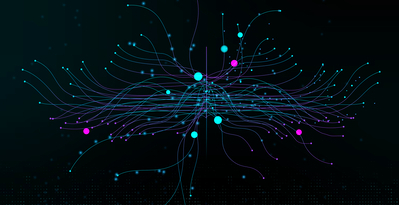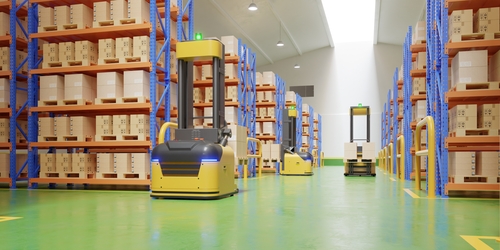Future of HR redefined by AI
3AI June 4, 2021

Artificial intelligence is transforming our lives at home and at work. At home, you may be one of the 1.8 million people who use Amazon’s Alexa to control the lights, unlock your car, and receive the latest stock quotes for the companies in your portfolio. In total, Alexa is touted as having more than 3,000 skills and growing daily. In the workplace, artificial intelligence is evolving into an intelligent assistant to help us work smarter. Artificial intelligence is not the future of the workplace, it is the present and happening today.
Investment in AI has accelerated from $282 million in 2011 to $2.4 billion in 2015, a 746% increase in five years. In 2016, this continued to increase with roughly another $1.5 billion being invested in more than 200 AI-focused companies in 2016. AI is becoming indispensable in the healthcare industry. Will we be saying the same thing about CHROs using artificial intelligence in the workplace? Will we consider it unthinkable not to use intelligent assistants to transform recruiting, HR service centers, and learning and development? I believe the answer is yes. HR leaders will need to begin experimenting with all facets of AI to deliver value to their organizations. As intelligent assistants become more widely used in our personal lives, we will expect to see similar usage in the workplace.
For employees, chatbots deliver an unmatched level of employee experience, from real time answers for HR questions to personalized learning and development. In addition, they are critically important to the 3.7 million workers, or 2.8% of the workforce, who work remotely at least half time and do not have easy access to an HR department.
For HR leaders, chatbots are well suited to improving talent acquisition and on-boarding processes by increasing speed and providing greater consistency in answering frequently asked HR questions, improving the talent acquisition process, and enhancing the online learning experience.
AI Chatbots To Answer Frequently Asked Employee Questions
Let’s consider Jane, a chatbot created by Loka, in 2014. Jane provides real time answers to a range of HR questions, including, “Are we off on President’s Day?” or “What are my dental benefits?” Jane is capable of answering any question and answer set that can be stored in a database. In addition to answering frequently asked questions, CEO Bobby Mukherjee says Jane is designed to proactively promote benefits to employees they may not yet know about. Says Mukherjee, “Companies are coming up with lots of new benefits, but they do not have an effective way to promote usage.” Imagine Jane can reach out to employees with, “Hey John, have you tried our Yoga class that we are offering in your building today at 3:00 pm? Click here to automatically book yourself. You’ve been working hard and you deserve it!”
Another value of Jane is the opportunity to track employee issues using real time analytics and then apply sentiment analysis to address these issues. Let’s say that a majority of employees are asking questions about late payments for travel reimbursements. This data can indicate something in the system isn’t working correctly. Before things become a full blown issue, HR leaders can uncover the issue and communicate a solution.
Granted there will be questions Jane cannot answer yet, but the opportunity is here to provide AI for all types of HR related questions that might be coming into your HR Service Center.
AI To Improve Talent Acquisition
Talent acquisition and new hire on-boarding are ripe areas where intelligent assistants can tap multiple data sources to develop candidate profiles, schedule interviews, and make decisions about prospective job candidates.
Talla is a chatbot designed to augment the HR processes that source job candidates. Talla can provide a set of interview questions based upon the role, and can even conduct a Net Promoter Score survey following the recruiting process. Rob May, CEO of Talla, sees, “an intelligent assistant as being able to augment a mid-level HR professionals’ job so she can focus on more strategic HR issues.” The vision behind launching Talla is to ultimately become a real time advisor to HR professionals in how they source and on-board new hires.
May estimates that Talla will save many hours in recruiting and on-boarding new hires and will greatly enhance the employee experience. Improving talent acquisition and new hire on-boarding is a priority for CHROs. According to Eric Lesser, Research Director of IBM Institute for Business Value, “More than half of the CHROs surveyed believe cognitive computing will affect a wide range of roles in the HR organization, ranging from senior executives to individuals working in service centers.”
AI for Talent Management Inside Workplace
AI can also be used for intricate data collection of employees in their workplace in an automated fashion. One option would be to track the movements of the employees inside office space to assess their activities on ground. Companies can track employees’ whereabouts in the office. Bluvision makes radio badges that track movement of people or objects in a building, and display it in an app and send an alert if a badge wearer violates a policy set by the customer—say, when a person without proper credentials enters a sensitive area. The system can also be used to track time employees spend, say, at their desks, in the cafeteria or in a restroom.
Bluvision’s AI compensates for the margin of error in determining location of radio transmitters, allowing the system to locate badges with one-meter accuracy, according to COO John Sailer. Without it, people near one another would be indistinguishable, and the positions of doors, desks, walls and the like—useful information for security and optimizing use of space—would be blurred.
The system is also useful in situations where contractors are paid hourly or piecemeal, such as on a construction site, where subcontractors must complete work in order and on schedule to avoid cost overruns. Although Bluvision tracks individuals, it can also be set to present only aggregate trends. That allows customers to take advantage of location tracking without breaking privacy laws or agreements protecting personally identifying information about employees.
The limits of AI Currently
For all their promise, these systems raise a number of issues. Some are evident today, in the early stages of adoption, while others may take time to become clear.
Privacy is an obvious concern when tracking employees, particularly personal behavior. Systems that sort job candidates also raise questions. Entelo’s may emphasize people with a large online footprint; SAP’s might prefer those who best match characteristics of people who were hired in the past.
Also, the limitations of current approaches boil down to the difficulty of drawing valid conclusions from incomplete data. For instance, measurements of employee performance at any given company are based on the set of people hired and lack information about candidates who were passed over—or weren’t even interviewed—who may have, say, produced more in less time. Aggregating data from many customers, as some larger vendors including SAP and Workday do, can reduce bias, but the problem remains that different companies may not track the same variables in the same way, and subtle but important ones are likely to be missing.






